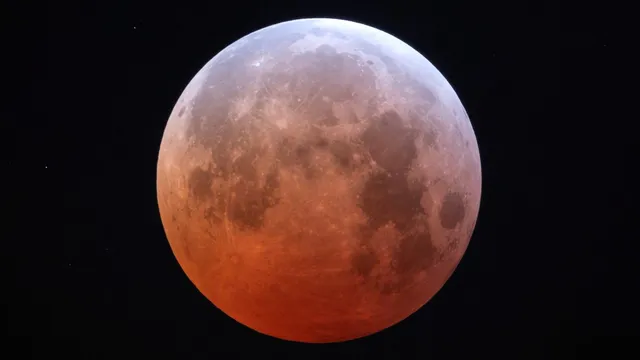
Viewers to witness breathtaking blood moon during total lunar eclipse
2025-03-14 07:07- Tonight, a total lunar eclipse will result in a blood moon observable from North and South America.
- The peak of the eclipse will occur early in the morning hours after the moon enters Earth's shadow.
- This event is significant as it marks the first total lunar eclipse viewable since 2022.
Express your sentiment!
Insights
Tonight, a significant astronomical event will take place as North and South America will have the opportunity to witness a total lunar eclipse, creating what is commonly referred to as a blood moon. The event will begin around 11:57 p.m. EDT, as the moon starts to enter Earth's shadow, with complete coverage occurring from 2:26 a.m. to 3:31 a.m. This is a unique sight that will not only be observable from the Americas but might also be glimpsed from parts of Europe and Africa. The last total lunar eclipse visible on these continents was in 2022, so this event marks a notable return. The moon will be at its peak illumination during the eclipse, which not only showcases a rich reddish hue but also aligns with the rising of the full moon. Viewers are encouraged to check local forecasts to find clear viewing opportunities, as conditions can vary greatly across different regions, and atmospheric factors can influence the visual experience. For stargazers in the U.S., binoculars or telescopes are options for enhancement but are not necessary to enjoy the spectacle, as the event can be seen with the naked eye. The earth’s umbra, the darkest part of its shadow, will cover the moon, allowing for this rare celestial sight. When the moon is entirely within the Earth’s shadow, any sunlight penetrating the atmosphere will refract, enhancing the red-orange color that has led to the moniker of blood moon. Consequently, the more particles present in the atmosphere, such as dust or clouds, will enhance this red hue. The event is expected to culminate around 2:59 a.m., providing a peak viewing experience for those watching from the Americas. Although viewers in the UK will only experience a partial eclipse as the moon will have already set, the totality of the lunar eclipse will be a highlight for those in the western hemisphere. Following this event, there is another total lunar eclipse on September 7, primarily viewable from Europe, Asia, Africa, and Australia. The next opportunity for a total lunar eclipse in the Pittsburgh area, for example, is scheduled for March 3, 2026.
Contexts
A lunar eclipse is a celestial event that occurs when the Earth passes directly between the Sun and the Moon, resulting in the Earth's shadow being cast upon the Moon. This phenomenon can only take place during a full moon when the Moon is on the opposite side of the Earth from the Sun. There are three main types of lunar eclipses: total, partial, and penumbral. In a total lunar eclipse, the entire Moon falls within the Earth's umbra, the darkest part of its shadow, resulting in a striking appearance where the Moon can take on a reddish hue often referred to as a "blood moon." A partial lunar eclipse occurs when only a portion of the Moon enters the Earth's umbra, while during a penumbral eclipse, the Moon passes through the Earth's penumbra, leading to a subtle shading on the Moon's surface that can be difficult to observe with the naked eye. The duration and visibility of lunar eclipses can vary significantly based on the Moon's position in relation to the Earth and the Sun. Total lunar eclipses can last several hours, with the totality phase where the Moon is completely covered by the Earth's shadow lasting approximately 30 minutes to over an hour. The frequency of lunar eclipses is such that there are typically about two to four eclipses each year; however, not all will be total eclipses. The visibility of an eclipse also depends on the observer's geographic location and the timing of the event, as some eclipses may be visible only from certain parts of the world. Lunar eclipses have considerable cultural and scientific significance. Throughout history, various civilizations have attached mythological meanings to them, often viewing them as omens or signals of change. In modern times, lunar eclipses offer opportunities for scientific study. Observations during these events can yield valuable data regarding the Moon's atmosphere and surface properties. For instance, the reddish color observed during a total lunar eclipse is due to Rayleigh scattering, the same phenomenon that causes sunsets to appear red. This effect allows scientists to study the composition of the Earth's atmosphere based on the characteristics of the light filtering through it. In conclusion, lunar eclipses are captivating events that showcase the dynamic relationship between celestial bodies. They serve as a reminder of the intricate workings of our solar system while also providing an avenue for exploration and understanding. The beauty and rarity of these eclipses continue to fascinate both amateur stargazers and professional astronomers alike, making them a significant topic of interest in both the scientific community and popular culture.